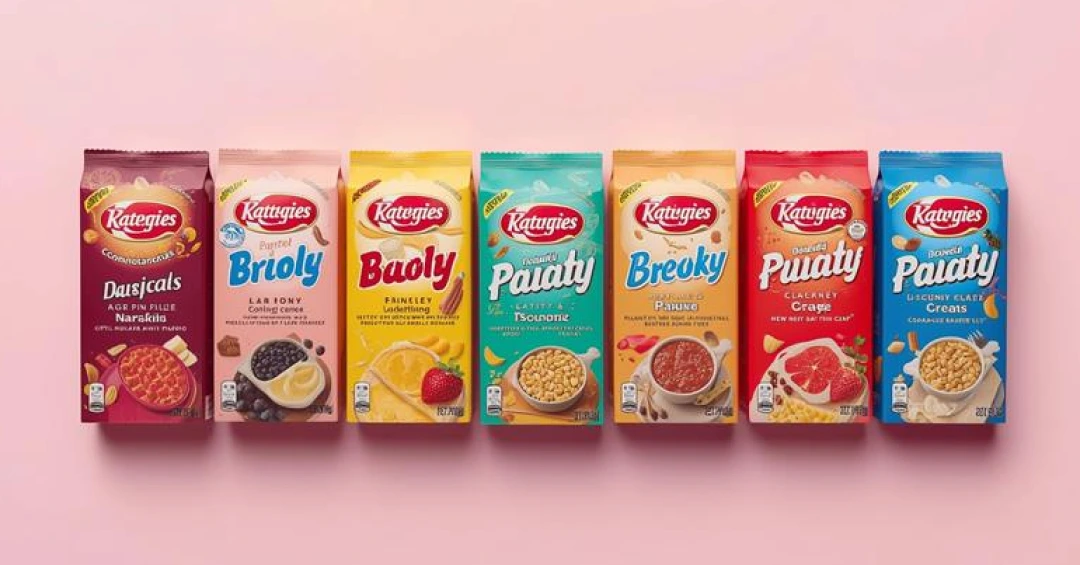What’s changing in U.S. Food Labeling
The U.S. packaged food industry is at a critical juncture. Texas has introduced Senate Bill 25 (SB25), a bold move by a major state to mandate warning labels on packaging containing ingredients that are banned in many other countries. This could significantly reshape packaging and labeling rules across the U.S.
SB25 doesn’t just address a niche issue or category. It targets more than 40 common food ingredients—from synthetic dyes to bleached flours—found in everything from children’s cereals to soft drinks. If signed into law, the ripple effects will extend well beyond Texas. Given the state’s size and influence, brands across the country may be forced to rethink their national labeling strategies.
For food brands and their teams, this isn’t just a new compliance challenge. It’s a signal to reassess your current labeling strategy. Food labeling is entering a more fragmented and fast-evolving phase, and the systems supporting it must keep pace.
What’s in Texas Senate Bill 25?
Backed by Robert F. Kennedy Jr., Senate Bill 25 (SB25) would require any processed or packaged food sold in Texas to carry a clear warning label if it contains certain controversial ingredients.
The list includes 44 ingredients that are banned or restricted in Australia, Canada, the EU, or the UK, but are still permitted for use in the United States. These include commonly used substances such as Red Dye 40, bromated flour, and several chemical preservatives.
If enacted in the current form, here’s what SB25 would require starting January 1, 2027:
- Warning labels must be in a font size equal to or larger than the smallest FDA-required text on the pack.
- Labels must be placed in high-contrast, easily visible locations on the packaging.
- The law applies to any packaging artwork designed or copyrighted on or after January 1, 2027.
- The warning must read:
"WARNING: This product contains an ingredient that is not recommended for human consumption by the appropriate authority in Australia, Canada, the European Union, or the United Kingdom."
Importantly, the labeling requirement only applies when the artwork is newly designed or updated after the effective date. Existing packaging may continue to be used until it is voluntarily redesigned.
If the FDA or USDA later deems the ingredient safe, restricts its use, or mandates federal labeling, those federal regulations would preempt Texas' rules.

What This Means for Food Brands
While SB25 is a state-level law, its implications are likely to be felt nationwide. With over 31 million residents, Texas is one of the largest consumer markets in the U.S., and its regulations often set the tone for broader industry shifts. Historically, when states like Texas or California introduce significant compliance mandates, brands tend to implement those changes across their entire product lines to simplify operations and avoid maintaining region-specific packaging.
For food brands, SB25 could mean:
- A comprehensive packaging refresh for all affected SKUs, not just those sold in Texas.
- Increased compliance and legal risks if artworks are inaccurate, outdated, or noncompliant.
- A heightened need for ingredient-level traceability across packaging assets.
- Greater collaboration pressure across regulatory, legal, marketing, and packaging teams.
Even before enforcement begins, the bill is already influencing brand strategy. High-profile products across candy, soda, and cereal categories have already drawn public scrutiny due to the ingredients listed in SB25. For many CPG companies, SB25 is a catalyst for portfolio-wide audits and early compliance planning.
Why SB25 Demands a Smarter Labeling Strategy
SB25 isn’t just another labeling update—it’s a reminder of how fragmented and fast-moving the regulatory landscape has become. With more states likely to follow Texas’ lead, and global ingredient standards continuing to diverge, food brands can no longer rely on fragmented tools or siloed teams to manage packaging updates.
That’s why brands should rethink their approach to packaging artwork management.
By building systems that allow for traceable, version-controlled, and collaborative packaging workflows, teams can stay ahead of changing regulations—whether it’s SB25 in Texas or the next wave of rules elsewhere. Having the right systems in place means teams can handle label changes efficiently, reduce back-and-forth during approvals, and stay on top of compliance deadlines without last-minute pressure.
This is exactly where a packaging artwork management platform like ManageArtworks comes in. Built for regulated industries, it brings structure, speed, and control to every step of your artwork lifecycle.
Prepare for SB25 and What Comes After
The timeline may seem generous, but brands that act early have a distinct advantage. Waiting until the last minute to rethink your packaging process means risking rushed updates, mislabeling, and downstream supply chain issues. Early movers, on the other hand, will not only avoid disruption but can also signal their commitment to transparency and health, earning consumer trust along the way.
Texas Senate Bill 25 represents more than a state regulation—it’s a signal that U.S. food labeling is aligning more closely with global health standards. For brands, this is a chance to get ahead of the curve, not scramble to catch up. Packaging artwork management software can play a pivotal role in that transformation—bringing structure, compliance, and clarity to an increasingly complex labeling world.
With ManageArtworks, you can be ready for SB25—and for whatever comes next.





.webp)
















